Online curiosity piques interest in subtropical region with rare animals, forest perils
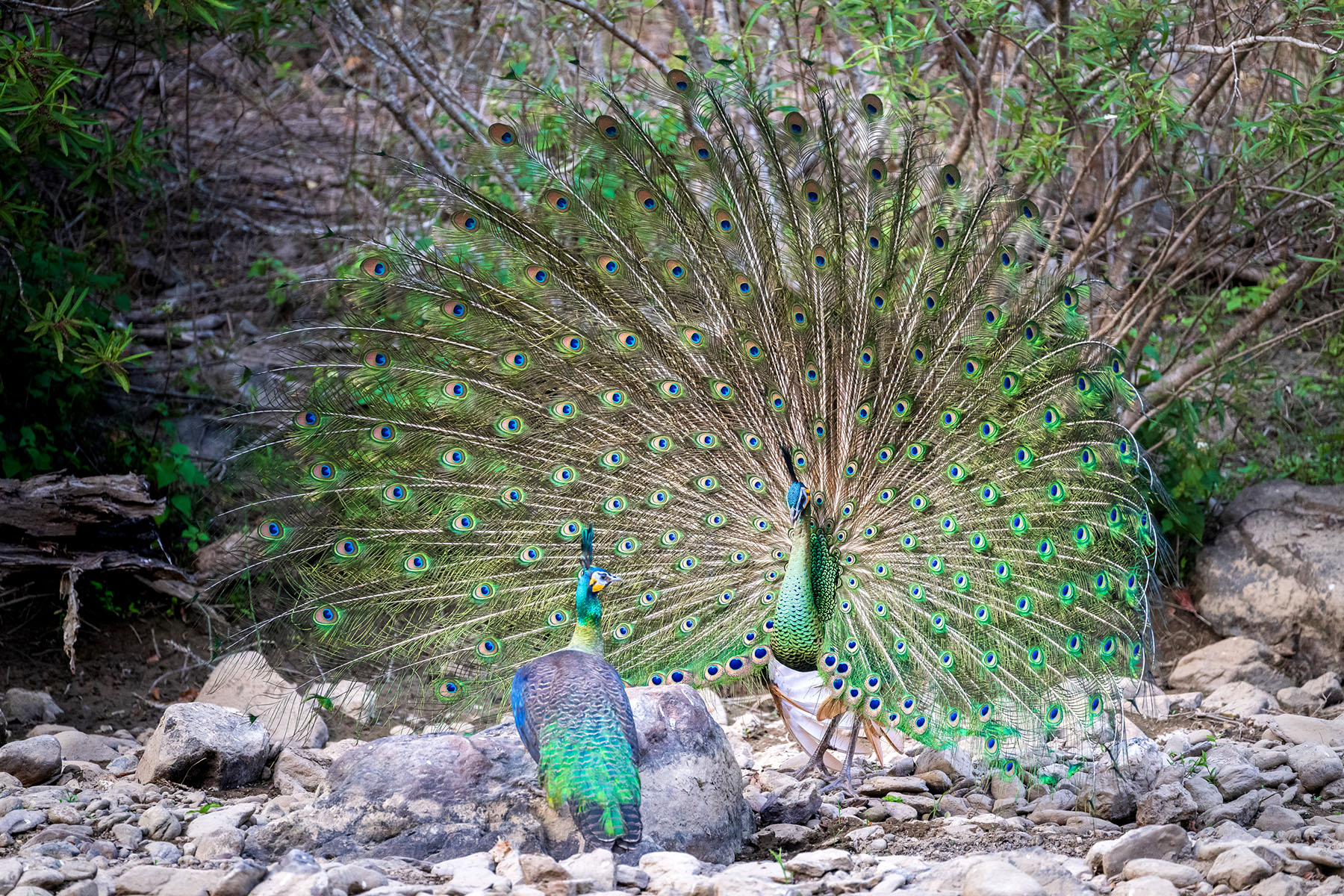
Driven by viral videos from influencers showcasing the perilous and rare beauty of the Ailao Mountains, the once-hidden range in Yunnan province has piqued a wave of curiosity in recent months.
The topic "A bird numbering only 1,000 worldwide observed in the Ailao Mountains" was a hit on social media platform Sina Weibo.
"The white-eared night heron is hard to spot due to its small population and secretive habits," said Zhao Xuebing, a lecturer at Yunnan University's School of Ecology and Environmental Science.
Classified as endangered on the International Union for Conservation of Nature Red List of Threatened Species, the bird has been given top-level protection by the Chinese government.
READ MORE: Forest guardians 'migrate' with the birds
Located in the central part of Yunnan, the Ailao Mountains extend approximately 500 kilometers from northwest to southeast. The range is home to China's largest, least disturbed, and most intact subtropical montane wet evergreen broadleaved forest ecosystem.
This pristine environment is a home for many lesser-known creatures. A large number of them are rare and endangered animals, including the western black-crested gibbon, clouded leopard and green peafowl.
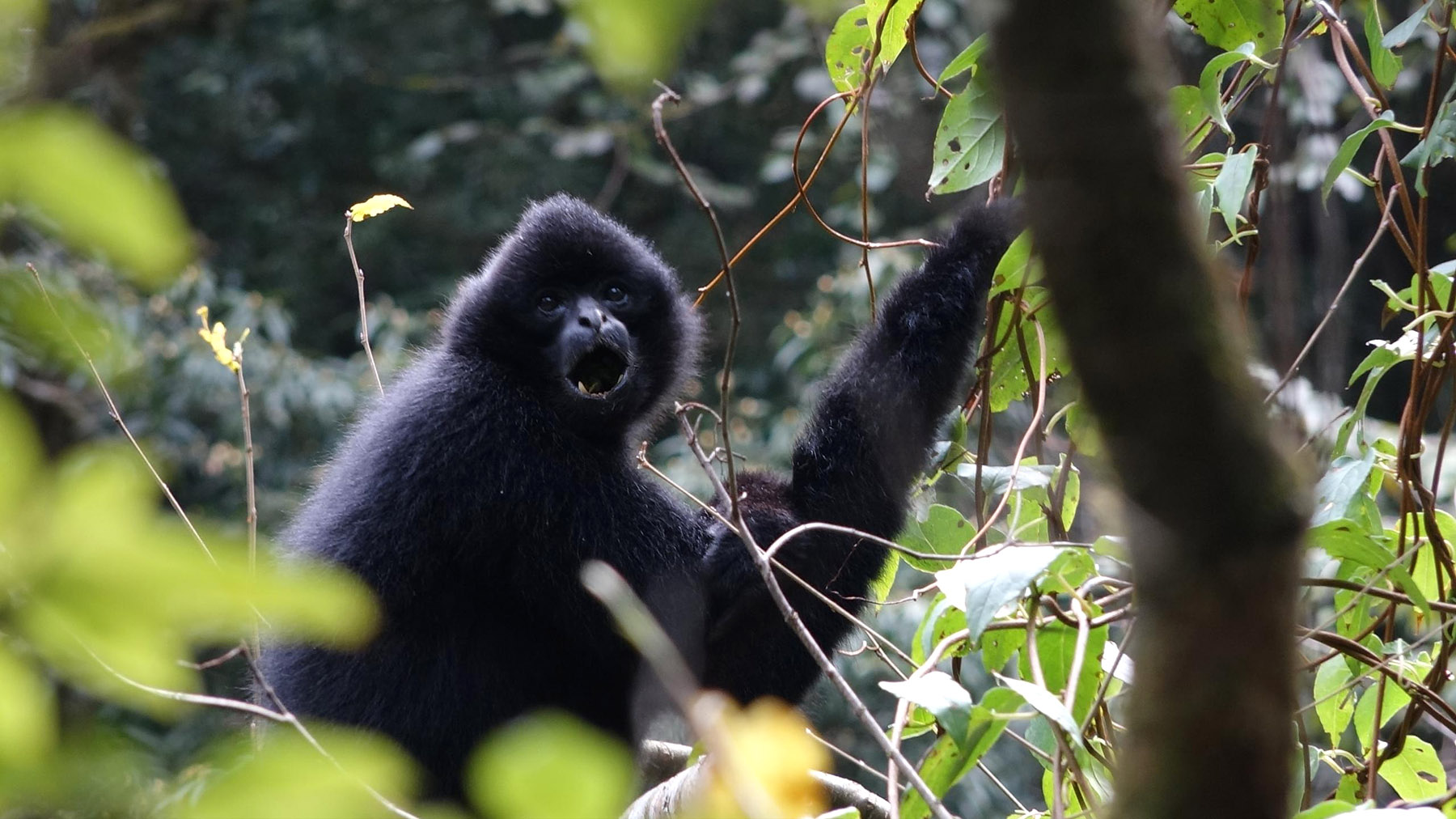
A vital pathway
The white-eared night heron has a wild population estimated at only 1,000 birds. However, in early October one was found at the Jinshan Yakou Xinping bird banding and monitoring station in the Ailao Mountain National Nature Reserve.
One of the most elusive members of the heron family, it breeds in the south and central provinces of China and migrates to the China-Myanmar border and Southeast Asia in autumn.
"The first discovery of the bird in the Ailao Mountains was in 2006," said Zhao, who is also secretary-general of the Kunming Birdwatching Association.
"After many years of silence, since 2021 it has been found here for four consecutive years, indicating that its population has reached a certain size."
Over the past 20 years, Zhao, whose main research focus is nocturnal bird migration, has visited the Ailao Mountains multiple times from September to November. Each visit he spends more than a month working with the station staff and his colleagues on bird banding and research.
Zhao said that the Ailao Mountains are an important corridor for migratory birds. The birds gather in lower passes in the mountain range to fly through.
The Jinshan Yakou Xinping banding station and Jinshan Yakou Zhenyuan banding station, where Zhao works, are located on either side of a ridge at the border of Xinping county in Yuxi and Zhenyuan county in Pu'er, with an average altitude of 2,400 meters.
According to the station's records, more than 200 species of migratory birds appear in that area each year, including the yellow-breasted bunting.
"It is now listed as a critically endangered species globally and a national first-class protected wild animal," said Zhao, adding that it used to be a common bird, and is similar in appearance to a sparrow.
"We used to be able to catch dozens each year for banding research, but now we might not catch even one in a year."
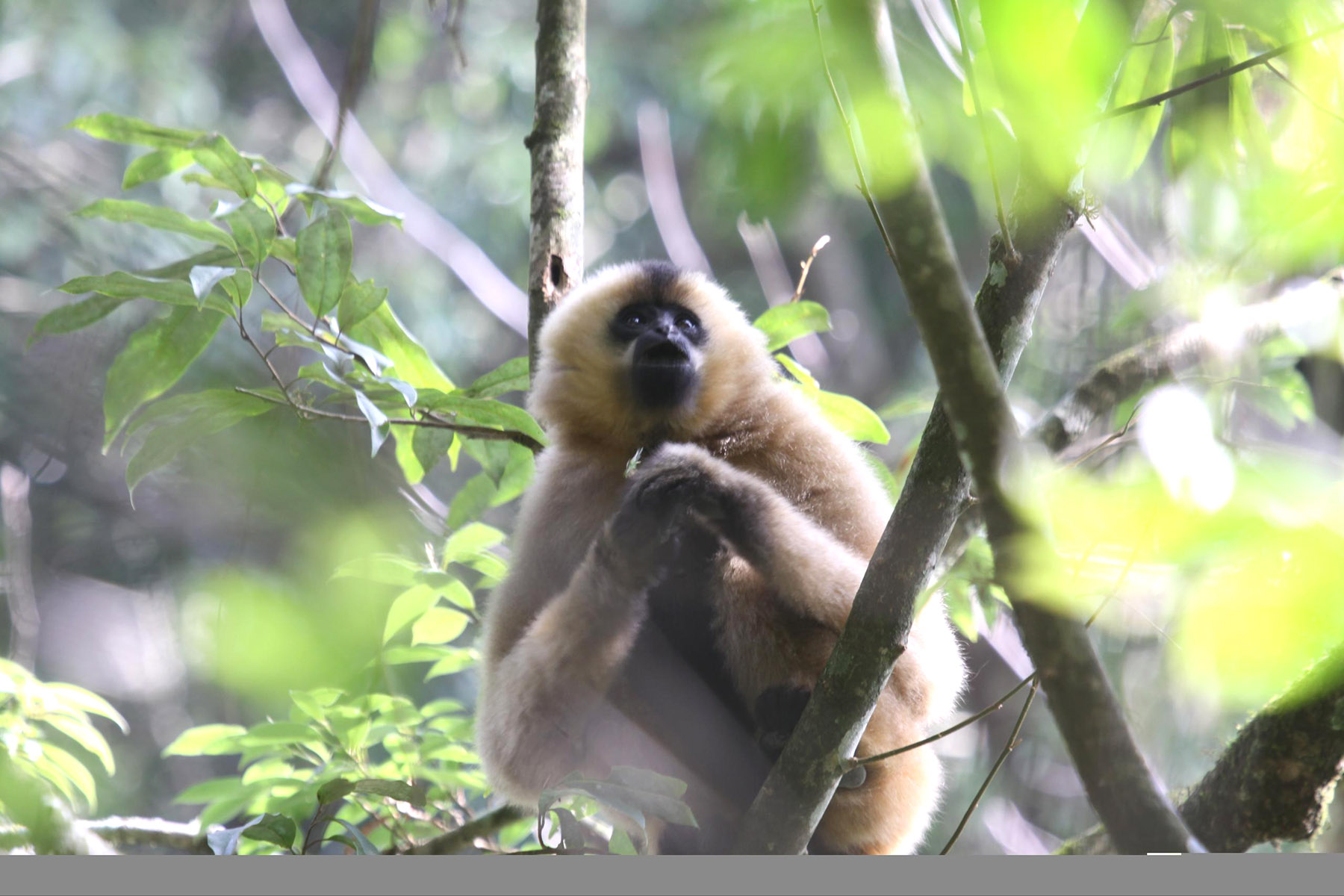
Cautious approach
Enveloped in dense mist, with towering trees obscuring the sky, vines intertwining with vegetation, and moss covering the rocks — the mountains' natural wonders have been attracting greater interest.
Zhang Junjie, who makes paints for artists, searches for rare pigments in the primeval forests. The videos about his searches went viral during the National Day holiday.
The mysterious allure of the Ailao Mountains has also been associated with the dangers its environment presents. A tragic event three years ago has been frequently cited as an example of its perilous nature.
In 2021, four geological survey workers went missing in the mountains and were later confirmed to have died of hypothermia.
Nevertheless, tourists have continued to flock to the area.
On Oct 6, the Ministry of Emergency Management issued a statement, warning that the Ailao Mountains contain unforeseeable dangers and urged tourists not to venture there recklessly. However, for some netizens, the dangers only add to the mountains' mystique.
Wu Fei, an associate researcher in ornithology at the Kunming Institute of Zoology, Chinese Academy of Sciences, called for a sensible approach to dealing with the risks.
"There are no GPS signals, and the scenery looks almost identical everywhere. Once lost, it's very difficult to find your way back," he said.
Wu's doctoral research was conducted in the mountains, and most of the trails he trod were created by patrol personnel.
The unpredictable weather, and the high humidity at night and during rainfall, are even more dangerous, he added.
The range spans 16 counties and districts across five cities and prefectures, including Dali Bai autonomous prefecture, Chuxiong Yi autonomous prefecture, Yuxi city, Pu'er city, and Honghe Hani and Yi autonomous prefecture.
To protect the Ailao Mountains, multiple national, provincial, prefecture-level, and county-level nature reserves have been established within its expanse.
The Ailao Mountain National Nature Reserve, located in the central and northern parts of the range, protects rare and endangered plants and animal resources and their habitats.
It spans five counties and county-level cities in Pu'er, Yuxi, and Chuxiong.
The reserve is divided into core, buffer, and experimental zones, with tourism allowed only in the experimental areas.
It is home to 86 species of mammals, 65 species of amphibians and reptiles, and 430 species of birds. Among them, 35 species are listed as national first- and second-class protected wild animals. They include the western black-crested gibbon, gray langur, stump-tailed macaque, clouded leopard, black bear, green peafowl, and black-necked long-tailed pheasant.
Several years ago, researchers from the Kunming Institute of Zoology conducted a groundbreaking study using DNA extracted from blood ingested by leeches to survey vertebrate biodiversity across the Ailao Mountain National Nature Reserve.
Spanning 677 square kilometers, the reserve was divided into 172 patrol zones. During their patrols, 163 forest rangers collected a total of 30,468 leeches.
Published in the journal Nature Communications in 2022, the study identified 86 vertebrate species, including amphibians, mammals, birds, and reptiles.
Notably, 15 of the species are listed by the IUCN as threatened or near-threatened, including the stump-tailed macaque, tufted deer, sambar deer, and the Asiatic black bear.
The study's findings revealed that species' richness increases with elevation and distance from the reserve's edge. This indicates that the core areas of the reserve provide a crucial sanctuary for many species.
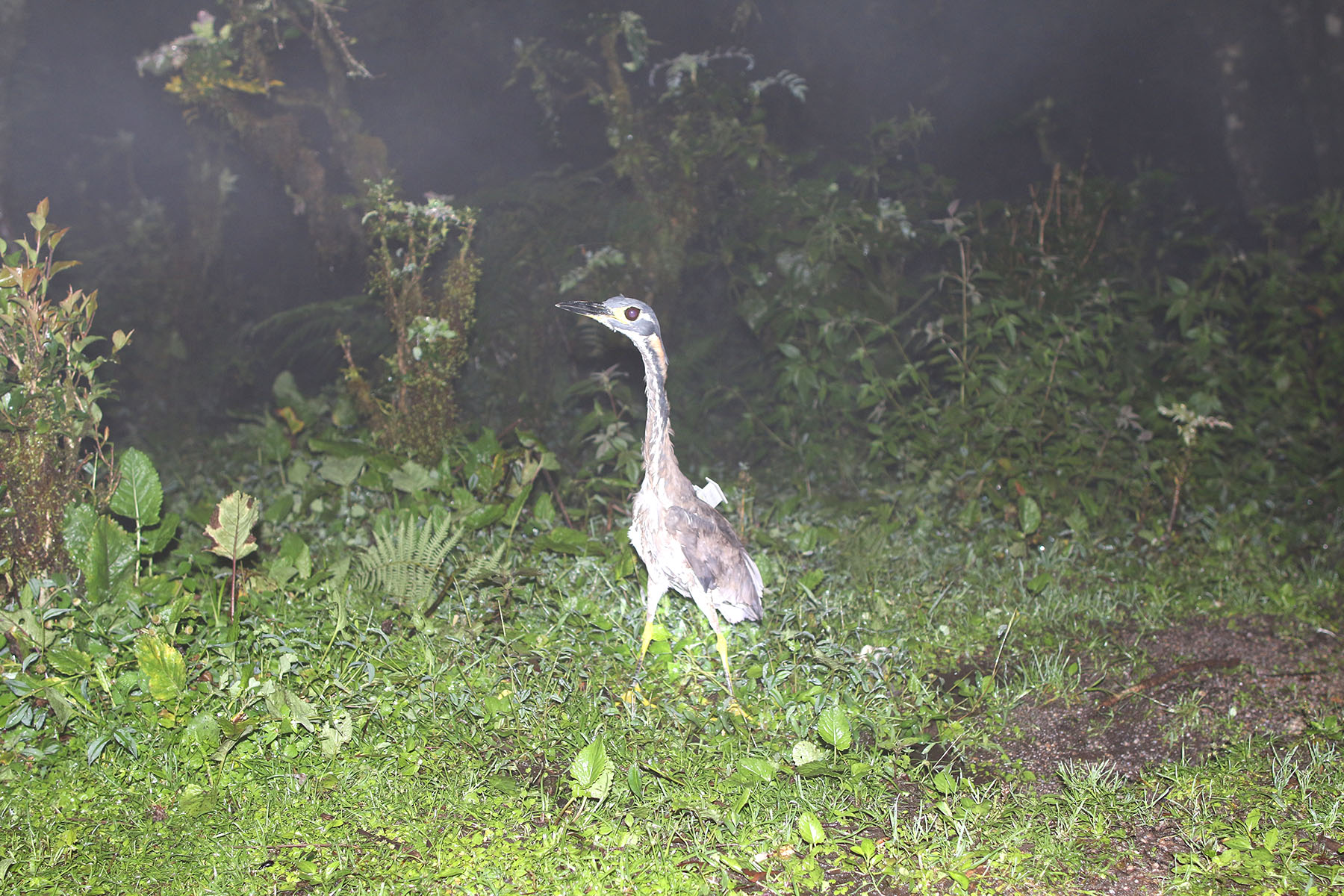
Green peafowl sanctuary
Among the fascinating animals in the Ailao Mountains, Wu is most concerned about the endangered green peafowl, also included on the IUCN red list.
The green peafowl, measuring 180 to 230 centimeters in length, is the only native peafowl species in China and the largest of the country's wild pheasants.
The males, having bright blue-green plumage with a crest of feathers on their heads, look robust and extraordinarily ornate.
These beautiful birds inhabit mainly deciduous broad-leaved forests and evergreen broad-leaved mixed forests along the banks of rivers, and feed on flowers, fruit and seeds, as well as termites, crickets and locusts.
Deep within the Ailao Mountains, in Shuangbai county of Chuxiong, a prefecture-level nature reserve named Konglong River was established in 2003 to protect the green peafowl.
At that time, there were eight to 10 groups of green peafowl in the reserve, totaling about 50 to 70 birds.
To better protect the green peafowl population and its habitat, the local authorities gradually expanded the reserve, built a monitoring network, and implemented rescue, protection, and restoration projects.
"As a flagship species, protecting the green peafowl also safeguards the river valley habitat and many other rare and endangered species within the original habitat," said Wu.
"It plays a crucial role in maintaining the stability of the river valley ecosystem," he said.
Sources from Shuangbai's forestry and grassland bureau told local media that as of November, the green peafowl population in the entire county was monitored by 66 groups with 430 individuals, making it the largest and best-protected habitat for green peafowls in Asia.
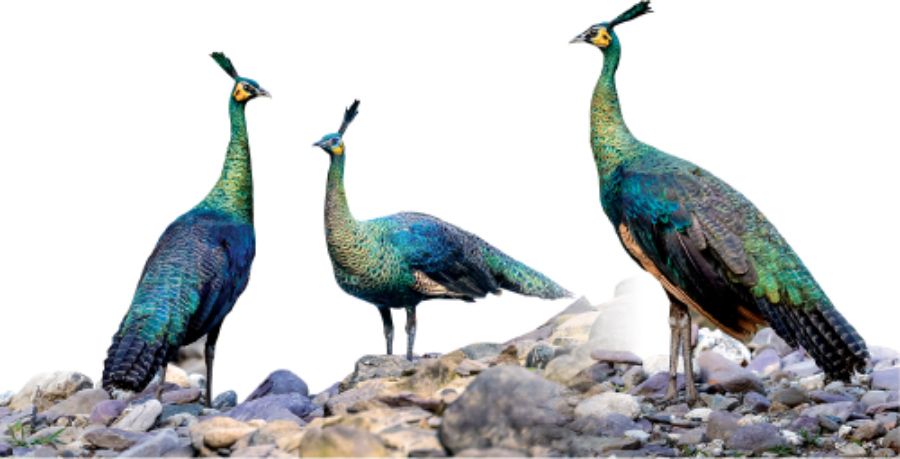
Observing rare gibbon
The critically endangered western black-crested gibbon, with a small, fragmented population of about 1,300 individuals, is mainly found in Yunnan, spanning the borders of China, Vietnam and Laos.
Due to its rarity, secluded mountain habitats, and extremely secretive behavior, this national first-class protected animal has always been shrouded in mystery.
With their long arms, almost twice as long as their body (about 50 cm), the gibbons can swing from branch to branch and travel long distances through the forest canopy.
These small apes eat fruits that are high in sugar (like figs), flowers, and younger and softer leaves. When these staples are not available they eat insects and small mammals.
The Wuliang and Ailao Mountains are the main distribution areas and important protection zones for the western black-crested gibbons.
In September, the Xinping section of the Ailao Mountain National Nature Reserve and the Kunming Institute of Zoology jointly established an observation point.
ALSO READ: Legacy etched in terraces serves modern purpose
"The Ailao Mountains area is one of the regions with rich biodiversity in central Yunnan, home to important species such as the western black-crested gibbon and the Indochinese gray langur," said Jiang Xuelong, a researcher at the institute.
"Our recent survey of the gibbons highlights the significance of the area. It was quite necessary to set up an observation point here," he said.
Jiang said they hope to better understand the wildlife diversity in the Xinping section of the Ailao Mountains and provide scientific support and data for biodiversity conservation in central Yunnan.
Guo Bin, director of the Xinping administrative bureau of the Ailao Mountain National Nature Reserve, pointed out that collaborating with the Chinese Academy of Sciences will help provide scientific data for future conservation efforts.
"It will also lay the foundation for future national park applications," he said.
Contact the writers at zhangxiaomin@chinadaily.com.cn


